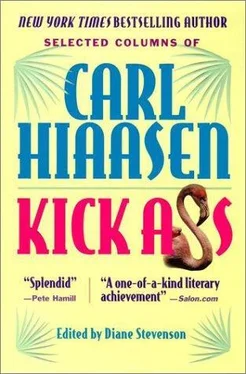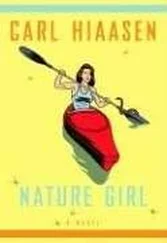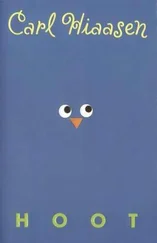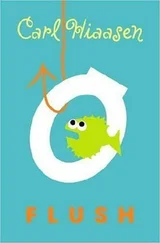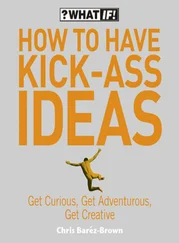"It's the only happy story in Florida," says Eric Draper of the Nature Conservancy, which compiled a list of top-priority purchases for the state.
The largest land acquisition program in the nation, Preservation 2000 owes its existence to former Gov. Bob Martinez. Searching for a constituency among environmentalists, Martinez had proposed P2000 as a way to preserve sensitive lands, while ensuring that property owners were fairly compensated.
The concept got support from respected conservation groups, so the Legislature went along. "They didn't realize what a good thing they'd created," Draper says.
Currently, money for the land purchases comes from revenue bonds sold by the state, grossing $300 million a year. Half goes toward the Conservation and Recreation Lands (carl) plan, and another 30 percent bankrolls the Save Our Rivers program. The rest goes for parks and forestry.
Working with local agencies, water districts and private philanthropists, P2000 has helped secure vital tracts along the Steinhatchee River, the Green Swamp Basin in Pasco County, and the Corkscrew Swamp. By contributing money for cleanup projects, P2000 played a role in settling the big federal lawsuit over agricultural pollution of the Everglades.
A list of areas targeted for future purchase stretches from the hammocks of North Key Largo to the pinelands of the Big Bend. Several counties have launched their own acquisition programs with bond issues approved by the public. The votes left no doubt that most Floridians will pay to protect threatened green space.
The best part of P2000 is that its bite is barely felt by taxpayers—at least for now. Unfortunately, lawmakers approved a 10-year spending project without a 10-year funding plan.
Consequently, in this season's budgetary panic, Preservation 2000 could be jeopardized—and with it, hundreds of thousands of acres of irreplaceable wilderness.
With any bond project, someone's got to pay the annual debt—about $26 million on each issue of P2000 bonds. In 1990, lawmakers got the money by raising documentary stamp taxes on liens and stocks. This year the debt service will be covered by a small hike in documentary stamps on real estate.
But what about next year? And the year after that? Each new P2000 bond carries a debt that the state must pay. For this reason, Gov. Chiles and some legislators are uneasy about issuing new bonds; rather, they want P2000 to have a dedicated source of funding.
Given the fiscal crisis in schools and prisons, it's unlikely lawmakers will simply appropriate $300 million for land acquisition. The money must come from a fresh well.
Some say bonds are still a good deal because interest rates are low, and raw land will never be cheaper. Whatever course is taken, any snag in the P2000 program would be bad news for conservation. Every lost day is costly, as illustrated by recent events near Apalachicola.
There the state had its eye on a vast stretch of swamp and pine groves called Tate's Hell. At 183,000 acres, it would have been the largest parcel ever saved from bulldozers.
But a developer with $22 million got there first. Last month the deal was signed, and soon Tate's Hell will have houses, "plantations" and a logging operation.
At least they won't have to change the name.
Proposal gives green power to the people
March 14, 1993
The days of carving up public parks for private profit might soon be over.
An amendment that appears on Tuesday's ballot would give more control of Dade's rich park system to those who own it—the people.
If the measure passes, no large commercial ventures could be launched in county parks without voter approval. That includes race-car tracks, pro tennis stadiums, flea markets and other extravaganzas that have been allowed to occupy public lands.
The premise of the charter amendment is that parks are meant to be preserved, not exploited. It's a concept that worries a few local bureaucrats, who look at Dade's shrinking green spaces and see not just trees, but money.
Piecing out park projects is a high-stakes deal; contracts and concessions often go to those with strong political connections. Letting the public get involved throws a wrench into the works. That's why Metro commissioners refused to put the Save Our Parks proposal on a ballot.
Supporters quickly collected almost 94,000 signatures on a petition, so the amendment is now on its way to voters. Meanwhile, officials in Miami and other cities are fretting aloud over the possible consequences. Imagine—allowing common citizens to decide how their parks should be used!
Politicians fear that voters might not appreciate some of their bold moneymaking schemes. Say, for example, that the city of Miami Beach wanted to build a parking garage in an oceanfront park. The uninformed masses might think poorly of the idea and vote against it, thus halting the march of progress.
Miami planners envision just such a scenario. They're trying to turn what's left of Bicentennial Park into a working annex of the seaport. If the Save Our Parks amendment passes, voters might block the expansion on the grounds that the cruise lines can damn well afford to buy their own docks. In anticipation, the city is hastily hunting for loopholes to allow the port landgrab to proceed, no matter what happens in the election.
The notion that parks should bring in revenue isn't new. It makes sense to have a bait shop at Crandon Marina, or an outdoor snack bar at Matheson Hammock. The public gets a needed service, and the county gets money from leasing the concessions.
But look at large-scale boondoggles such as the Grand Prix and the Lipton tennis tournament, which have transformed Bicentennial and Crandon parks respectively. Heavily subsidized by tax dollars, both events supposedly still bleed red ink, and each year the promoters come begging for more public money.
While the arrangement has been lucrative for Ralph Sanchez and Butch Buchholz, the county is hundreds of thousands of dollars in the hole. We're told that the deepening deficit is offset by the gazillions spent by fans attending these events, but documenting the alleged windfalls has proven difficult.
Perhaps voters will look kindly on such ambitious schemes, and eagerly surrender more local parks to private enterprise. If some dreamer wants to put a NASCAR oval in the Deering Estate—stock cars screaming around a gorgeous infield of royal palms—that's fine, as long as the voters say yes.
They probably wouldn't. Had the Save Our Parks amendment been the law a few years ago, the Grand Prix and the Lipton today might be held on private lands; same fun, different venue.
Even if the amendment passes, local government will still play die major role in initiating new projects. For once, though, the people who use the parks will get to decide whether commercializing a green space really improves it, and for whom.
If Tallahassee won't do it, voters will
December 11, 1994
If Tallahassee is the mule, then Amendment 3 was the proverbial two-by-four upside its head.
Last month, 72 percent of Florida voters approved a ban on the use of entanglement gill nets in state waters. The law took the extreme form of a constitutional amendment because it was the only way to get the issue before the people.
The governor and Cabinet wouldn't do it. Regulators hemmed and hawed. The Legislature chickened out. So a petition drive put it on the ballot.
Amendment 3's landslide passage was a powerful political proclamation: Floridians don't want their oceans and rivers raped anymore. They care passionately about conservation and will turn out in huge numbers to say so.
Was anybody in government listening? Somebody was.
"Today represents a defining moment in the care and nurture of our marine resources … The vote on the constitutional amendment clearly mandates that we do things differently and better."
Читать дальше
